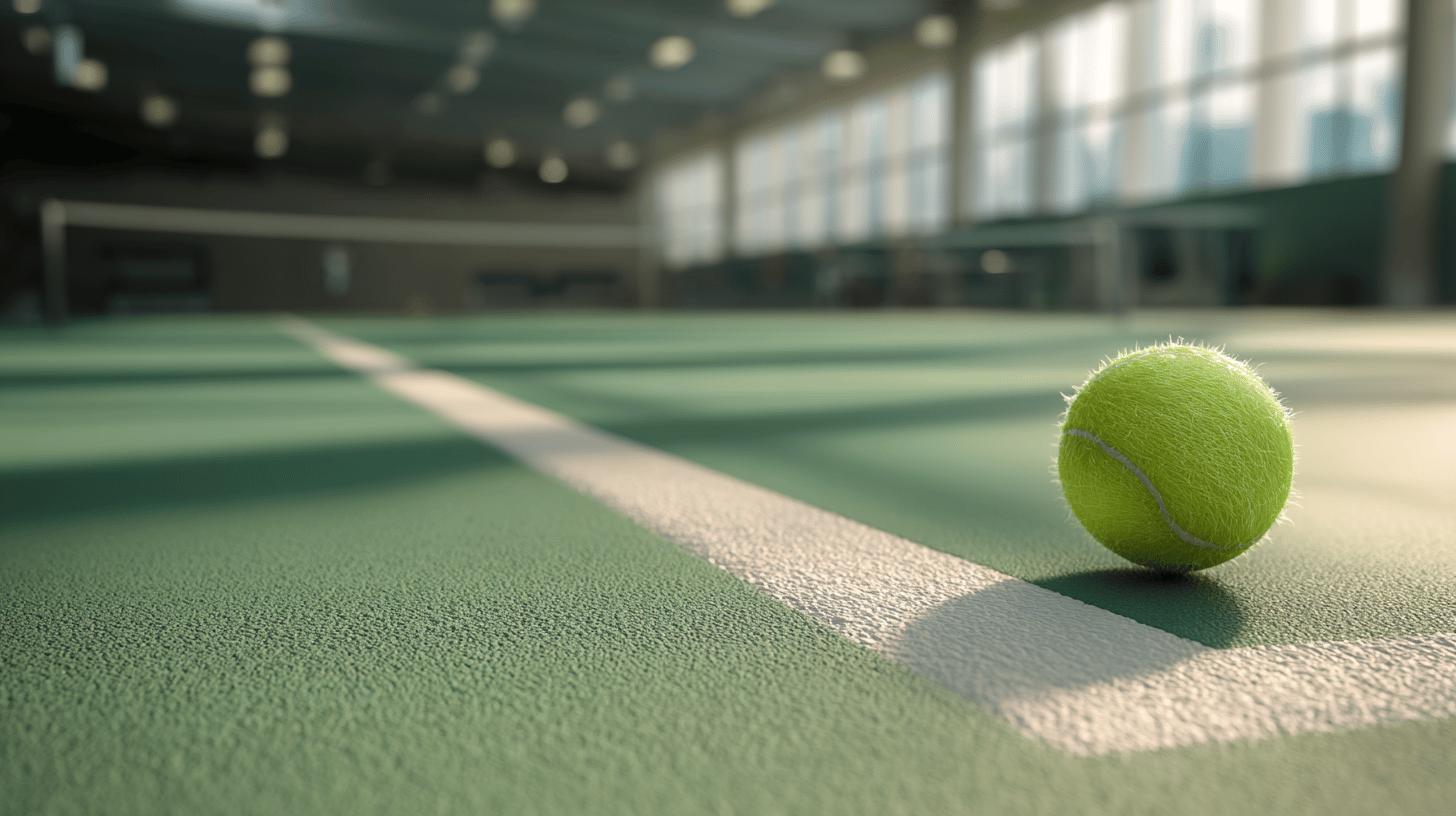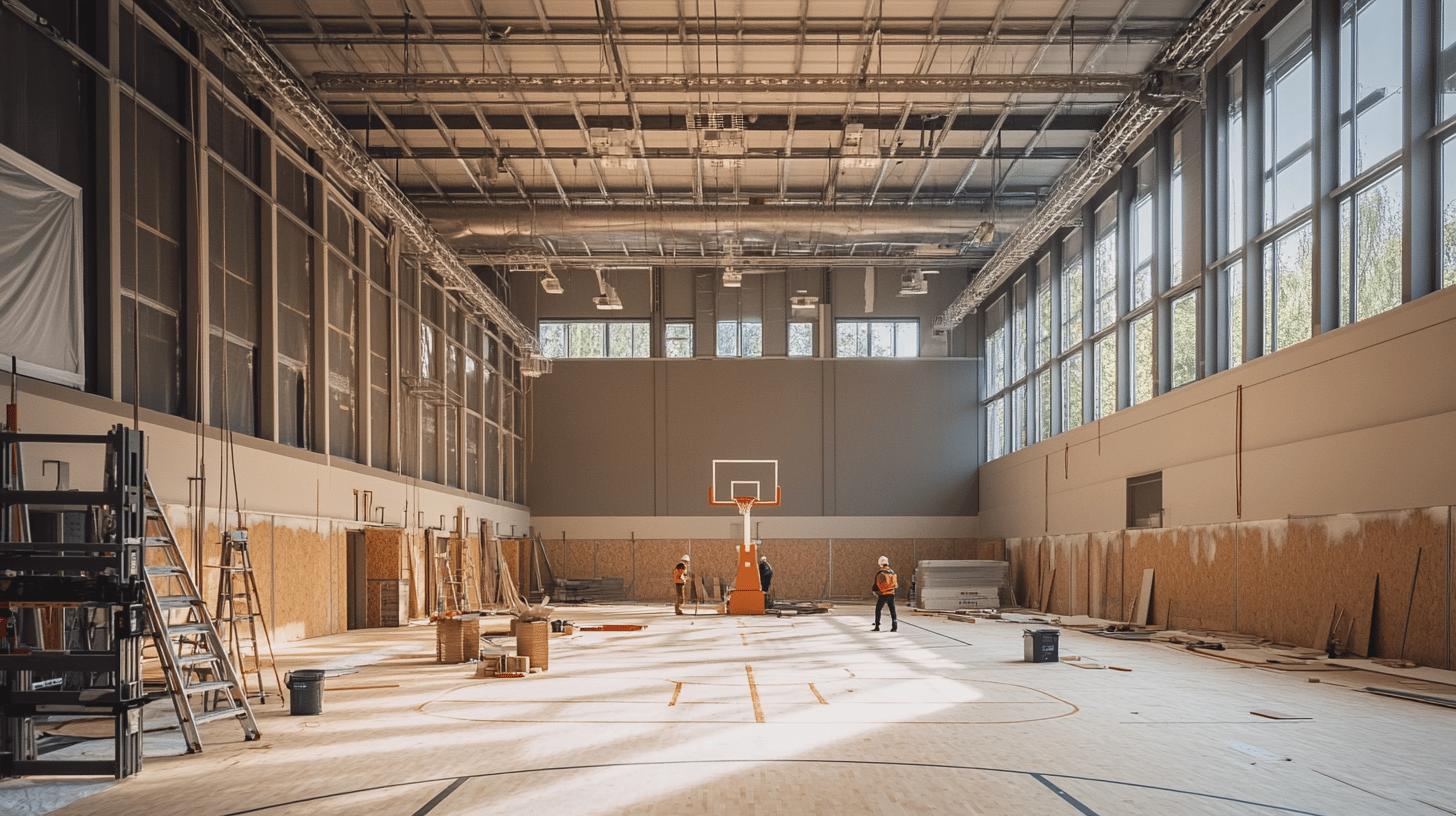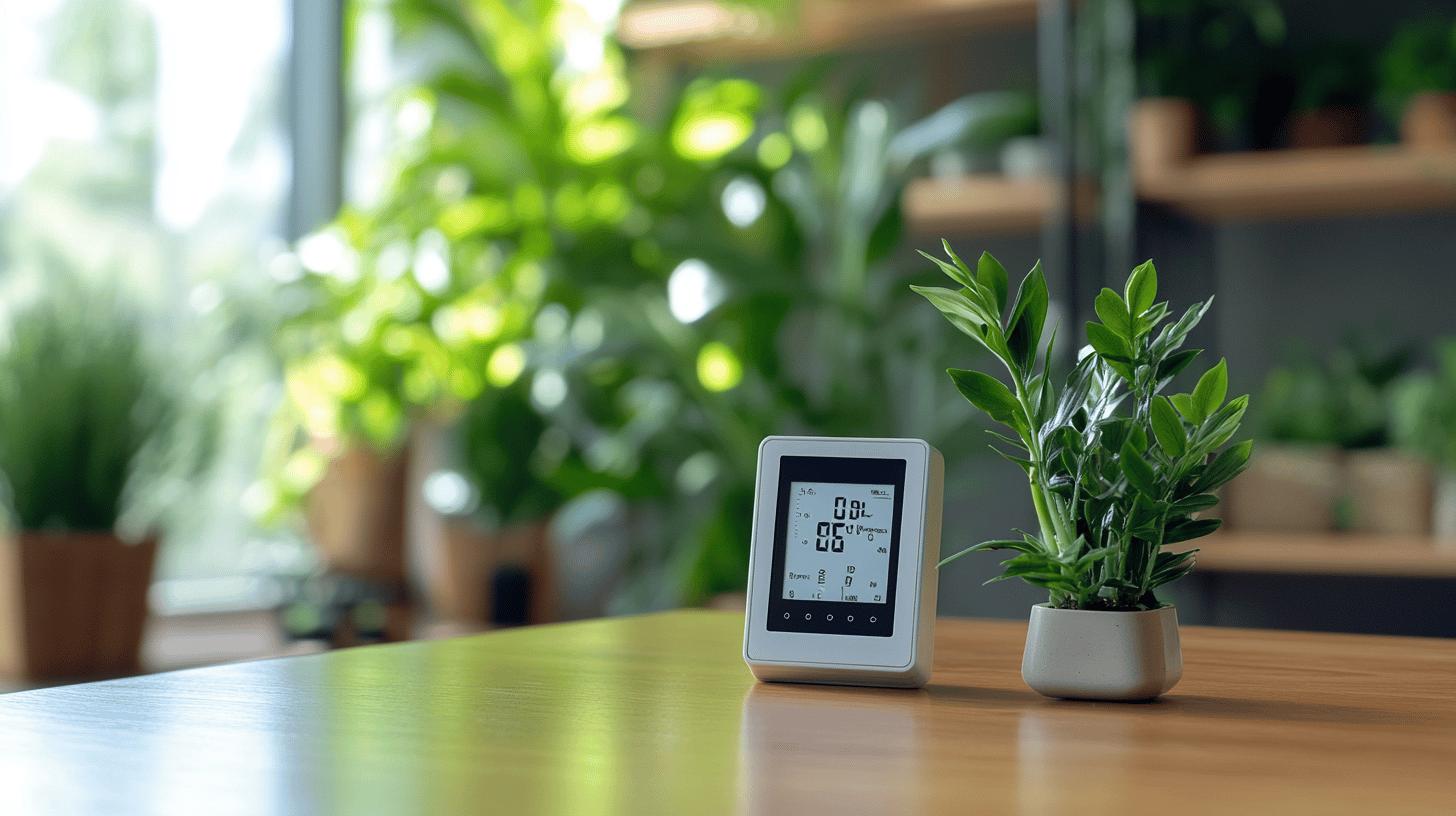What if the key to winning your next indoor cricket or netball match lies beneath your feet? Often overlooked, optimal ball bounce is crucial for peak performance in both sports. Delve into the dynamics of how surface material, atmospheric conditions, and maintenance intricacies interact to create the perfect bounce. Discover why these factors are not mere details but vital components that can significantly impact gameplay. Whether managing a sprawling sports facility or fine-tuning coaching strategies, understanding bounce dynamics will enhance the sporting experience and ensure regulatory compliance. Uncover the secrets to mastering your indoor court’s bounce characteristics with our comprehensive guide.
Factors Influencing Optimal Ball Bounce in Indoor Cricket & Netball
Ball bounce is a fundamental aspect of both indoor cricket and netball, directly impacting game performance and player strategy. Achieving optimal ball bounce enhances the quality of play, making it essential to understand the various factors that influence bounce dynamics and surface interaction.
Key factors influencing ball bounce include:
- Floor Material: Different materials like wood, vinyl, and polyurethane affect bounce height and consistency.
- Atmospheric Conditions: Humidity and temperature significantly alter ball behaviour, necessitating adjustments in play.
- Court Maintenance: Regular upkeep, including cleaning and surface inspections, ensures consistent bounce.
- Surface Texture: The texture impacts grip and ball movement, crucial for sports requiring precision.
- Ball Specifications: The material and pressure of the ball itself alter its bounce dynamics.
.
In indoor cricket, the firmness and elasticity of the sports court are vital, as they provide the necessary rebound for ball performance. The surface must be resilient enough to deliver a consistent bounce height, essential for both bowling and batting accuracy. Maintenance practices such as regular slip resistance testing and line marking are crucial to preserving the court’s surface integrity.
Conversely, netball courts require a slightly cushioned surface to accommodate rapid directional changes and player safety. Here, the interaction between the ball and surface texture dictates bounce dynamics, facilitating precise passing and shooting. Atmospheric conditions, such as high humidity, can soften the court surface, affecting bounce consistency and player traction. Regular monitoring of these conditions helps maintain optimal performance levels in both sports.
Comparing Standard Playing Conditions for Indoor Cricket and Netball
Standard playing conditions are crucial for indoor sports like cricket and netball due to their significant impact on ball bounce dynamics and overall gameplay. Each sport has unique requirements that dictate the ideal surface and bounce characteristics, ensuring optimal performance and player safety.
Indoor Cricket
Indoor cricket demands a firmer flooring surface to achieve consistent bounce height necessary for effective batting and bowling. What surface firmness is required? The surface must be resilient to provide a reliable rebound, which is crucial for maintaining accuracy and speed in ball delivery. Furthermore, cricket ball specifications, including material composition and internal pressure, are designed to complement these surface characteristics, ensuring regulated bounce dynamics. Regular maintenance of the flooring, such as cleaning and slip resistance testing, aids in preserving the desired bounce characteristics and prolonging the court’s lifespan.
Netball
Netball courts, in contrast, require slightly cushioned surfaces to protect players during rapid movements and directional changes. Why is cushioning necessary for netball? The cushioning absorbs impact, reducing the risk of injuries while maintaining adequate bounce for ball control. Netball bounce regulations stipulate specific bounce heights to ensure consistent gameplay, facilitated by the interaction between the ball’s material and the surface texture. Maintaining these conditions involves regular monitoring of the court’s condition, ensuring the surface remains consistent and free from irregularities that could impact player performance and safety.
| Sport | Bounce Height | Surface Type |
|---|---|---|
| Indoor Cricket | Consistent and firm | Firm |
| Netball | Regulated | Cushioned |
Practical Insights for Achieving Optimal Bounce Characteristics

Consistency in ball bounce is a critical factor that affects the quality of play in both indoor cricket and netball. How can sports hall managers and coaches ensure optimal bounce conditions? Ensuring the right surface material selection is essential, as it directly influences the bounce dynamics. Materials such as wood, vinyl, and polyurethane each have unique interactions with the ball, affecting bounce height and consistency. Court maintenance also plays a pivotal role; regular cleaning and surface inspections help maintain these optimal conditions. Furthermore, adjusting for atmospheric conditions like humidity and temperature can prevent unexpected changes in ball behaviour, thus preserving the intended bounce characteristics.
- Regularly inspect the court surface for damage or wear.
- Use appropriate cleaning agents to maintain surface texture.
- Conduct slip resistance testing to ensure surface integrity.
- Monitor atmospheric conditions and adjust heating or cooling systems accordingly.
- Schedule periodic maintenance to address any surface irregularities.
- Consult with flooring experts to choose the best material for specific sports requirements.
.
Expert recommendations emphasise the importance of a proactive approach to court maintenance and atmospheric adjustments. Engaging with flooring specialists can provide tailored solutions that optimise bounce characteristics, ensuring both safety and performance are upheld. Regular updates and inspections can lead to enhancements in bounce dynamics, thereby improving the overall gameplay experience.
Expert Advice on Indoor Sports Hall Flooring for Optimal Ball Performance
Expert guidance is invaluable when selecting indoor sports hall flooring to enhance ball performance. Understanding the intricacies of bounce mechanics and surface interaction is crucial in creating an environment that maximises both safety and performance. The right flooring choice not only optimises bounce dynamics but also contributes to the longevity and durability of the facility.
When considering flooring types, experts often recommend materials like vinyl, wood, and polyurethane due to their distinct characteristics. Vinyl offers excellent durability and low maintenance, providing consistent bounce across a variety of sports. Wooden flooring, particularly maple, is famed for its high elasticity, delivering a natural and predictable bounce, ideal for sports such as indoor cricket. Polyurethane surfaces provide a seamless finish and are known for their shock-absorbing properties, enhancing safety and comfort for players, particularly in netball. Each material’s interaction with the ball can significantly affect performance, making it essential to align the flooring choice with the specific requirements of the sport.
Regular maintenance is crucial to preserving the optimal conditions of sports hall flooring. Scheduled cleaning routines, using suitable agents, help maintain surface texture and prevent deterioration. Periodic inspections ensure early identification of wear, allowing for timely repairs. Innovations in sports flooring, such as advanced coatings and modular systems, offer improved resilience and adaptability, catering to evolving sports needs. By incorporating these technologies, sports halls can enhance bounce performance while ensuring the safety and satisfaction of athletes.
The Role of Atmospheric Conditions in Ball Bounce Dynamics
Humidity and temperature are critical atmospheric factors that influence ball bounce dynamics in indoor sports like cricket and netball. How do these conditions affect ball performance? Humidity impacts the moisture content of the air, which can alter the ball’s surface friction and the court’s texture, affecting bounce consistency. Temperature changes can modify the ball’s elasticity, with higher temperatures typically increasing bounce height and lower temperatures reducing it. These variations necessitate careful monitoring and adjustment of indoor environments to maintain optimal ball behaviour and ensure fair play.
- Monitor humidity levels: Use dehumidifiers or humidifiers to maintain consistent air quality.
- Control temperature: Adjust heating or cooling systems to stabilise the playing environment.
- Regularly inspect surfaces: Ensure that the court surface remains unaffected by moisture or temperature changes.
- Adapt training drills: Modify exercises to suit the prevailing atmospheric conditions.
.
Strategic adjustments to training and game strategies are essential when facing varying atmospheric conditions. Coaches can incorporate flexibility into practice sessions, allowing teams to adapt to different bounce dynamics. This adaptability ensures that players remain proficient under diverse conditions, maintaining performance levels and reducing injury risks.
Final Words
Achieving optimal ball bounce in indoor cricket and netball requires focus on several critical factors. Surface material, atmospheric conditions, and regular maintenance significantly impact performance. Understanding standard playing conditions for both sports, particularly bounce height and surface texture, ensures players can perform at their best.
By selecting appropriate materials and implementing expert-recommended strategies, sports facility managers can ensure court conditions meet desired specifications. Atmospheric conditions, such as humidity and temperature, play an indispensable role in ball dynamics, necessitating savvy adjustments to maintain consistency.
Consistent application of these insights ensures Optimal Ball Bounce Windows for Indoor Cricket & Netball, setting the stage for impressive game performance and heightened player enjoyment.
The Role of Traction in Athlete Safety and Success
Tune rebound → International Sports Flooring
FAQ
Is wind ball good for cricket?
A wind ball is suitable for beginners to practise cricket. Its reduced hardness and weight decrease the risk of injury, providing an ideal training environment for honing skills in batting and bowling techniques.
Do cricket balls bounce high, medium, or low?
Cricket balls generally bounce medium to high depending on the pitch and ball condition. The bounce height can also be affected by the surface material, maintenance, and atmospheric conditions such as humidity.
What ball do you use for indoor cricket?
For indoor cricket, specialised indoor cricket balls are used. These are typically softer and lighter than standard cricket balls to accommodate the unique bounce and safety requirements of indoor surfaces.
What is the third ball rule in indoor cricket?
In indoor cricket, the third ball rule compels the batting team to score off every third legal delivery if no runs have been accrued on the previous two balls. This rule encourages active play and prevents stalling tactics.


